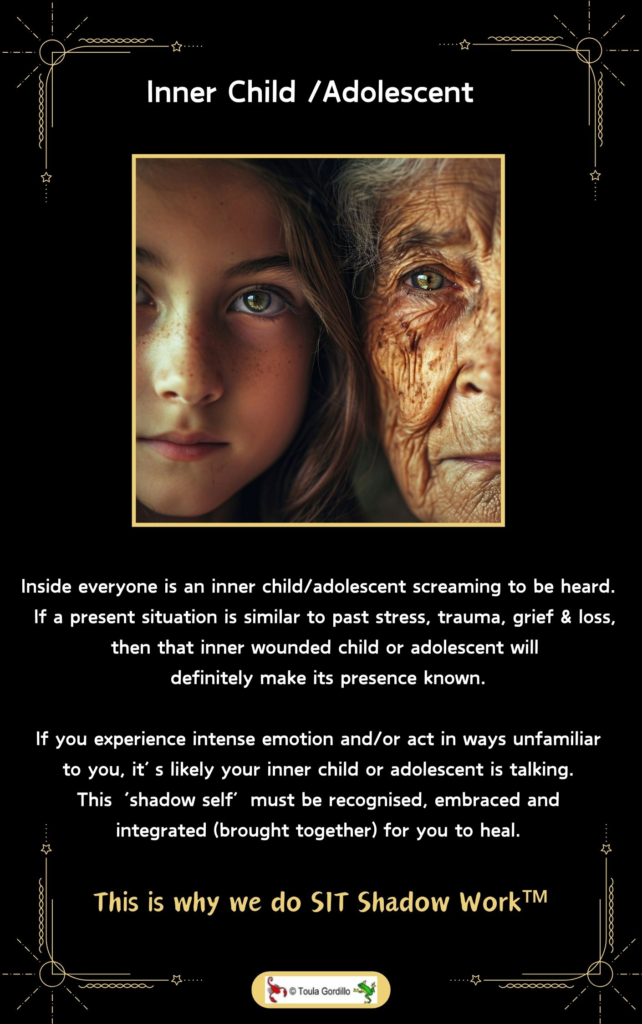Regular shadow work helps a person to recognise their unresolved unconscious issues. SIT Shadow Work™ does this… and more
The shadow self is a concept originating from Jung’s psychology. According to Jung, our personality includes the persona (personality we show to the public) and the shadow self (personality which remains private or hidden). Unlike the persona, our shadow self includes all the traits we not like to show. The shadow is not, however, just a negative or shameful part of our personality. It is an important part of our psyche, and the goal of SIT Shadow Work is to assimilate the shadow and persona so we can learn to manage our impulses that we usually ignore. These can include emotions such as fear, anger, loneliness or spite. In Story Image Therapy and SIT Shadow Work, they are known as ‘fearful frog’ or ‘stinging scorpion’ motivation or behaviour. Not only does SIT Shadow Work help us to integrate our conscious and unconscious influences, it also helps us to integrate the unconscious societal influences that also affect the shadow (unconscious) part of our personality. This includes the collective memories and impulses of society as a whole.

The famous Swiss psychiatrist and founder of analytical psychology, Dr Carl Jung, was the first person to talk about our shadow self. By this, he meant the dark side of our personality. It’s the part that we keep hidden, suppressed/repressed, or don’t wish to acknowledge. Most often, we are not even aware of its existence… until we are triggered.
If we had significant problems and pain during our teen years, these can leave an invisible scar. We may have experienced emotions such as intense confusion, felt as though we were abandoned, thought we were inadequate and not good enough etc. We must learn to work through these feelings as a teenager, and how to make meaning out of them, or they will likely continue to cause us pain well into our adult years.
Emotions are often exaggerated during adolescence, so whatever we may have felt will likely be magnified. Pleasant events can lead to euphoria when things are going well. We can experience intense excitement for the future, and our first love can bring a roller-coaster of emotions we’ve never felt before. Unpleasant events, however, can also lead us into the deep pit of adolescent despair when things are not going well.
If we don’t deal with our adolescent issues during our teen years, our psychological ‘wounds’ will lie dormant until we experience a situation that is somehow reminiscent of what we experienced as an adolescent. When we are triggered, for example, we will likely overreact to the situation, acting in an irrational manner almost as if our teenage self has emerged. Sometimes we can feel like we have reverted to feeling like a moody teenager again, screaming to be heard!
Practitioners of SIT Shadow Work often say it helps them to: